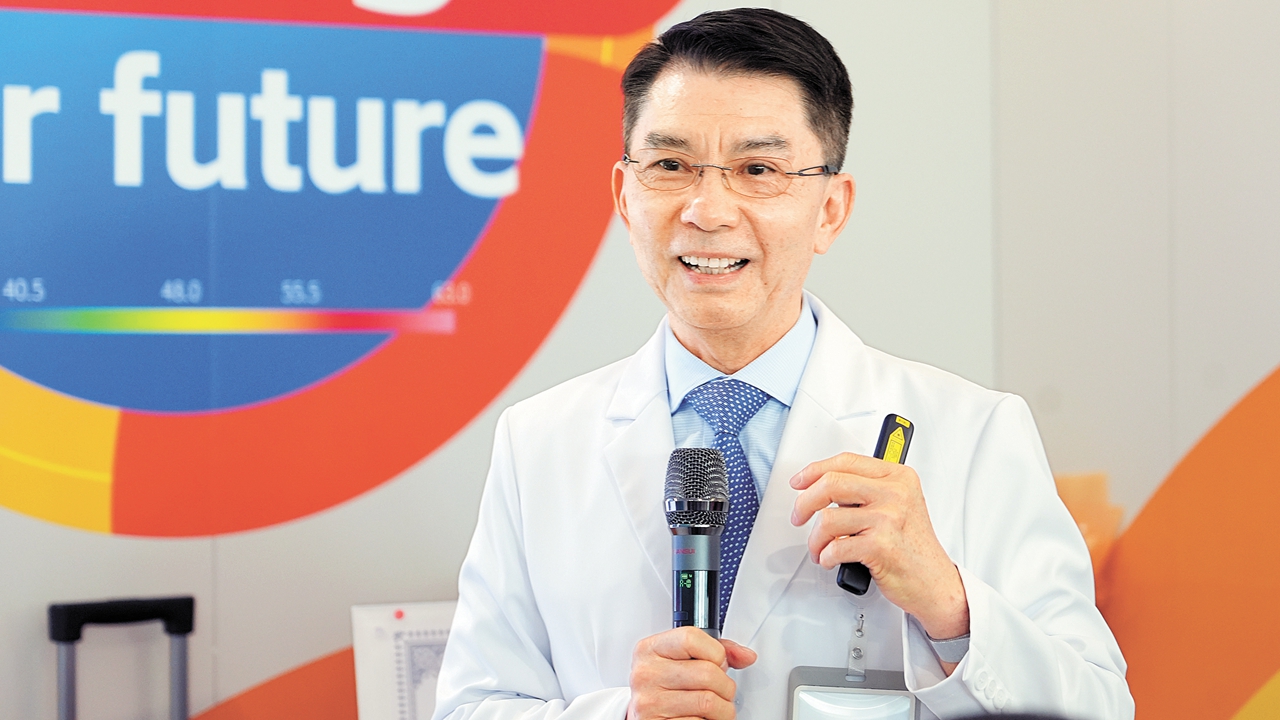Ophthalmology chain introduces AI-assisted LASIK surgery
Writer: Debra Li | Editor: Lin Qiuying | From: Original | Updated: 2024-12-16
Progress in medical services is primarily driven by the advancement of biomedicine, gene research, ingenious medical devices, and algorithms. Among these, rapidly-evolving artificial intelligence (AI) applications have been a game changer in recent years.
A workshop held Saturday afternoon at the Shenzhen branch of Bright Eye (“purui” in pinyin), a private hospital chain listed on the ChiNext board, again demonstrated the game-changing power of AI.

Liu Quan
Liu Quan, head of the hospital’s corneal-refractive laser surgery team, gave a lecture on the SCHWIND Foresight® software solution, which has greatly improved the precision and safety of LASIK surgeries. “Purui’s Shenzhen branch is the first in the city to introduce the AI-assisted Foresight software,” Liu told the Shenzhen Daily after the workshop.
LASIK, or laser in-situ keratomileusis, works for people who are nearsighted, farsighted, or have astigmatism. During the procedure, the doctor makes a flap in the outer layer of the cornea to get to the tissue underneath. They then use a laser to reshape the tissue underneath the patient’s cornea so it can focus light properly.
Liu, with 38 years of experience at the Zhongshan Ophthalmic Center, Sun Yat-sen University in Guangzhou, has continued to introduce the latest laser surgery technologies into China. He sought to introduce the software to the hospital after learning about it during an ophthalmology conference in Barcelona, Spain a few months ago.
The software, developed by German-based SCHWIND, visualizes the effect of each individual refractive surgery treatment on the cornea during planning, Liu said. It creates a virtual replica of the patient’s cornea that surgeons can use to dry run surgeries, refine their planning, and discuss treatments and the expected outcomes with their patients. The post-operative corneal shape is calculated and visualized by subtracting the treatment profile from the virtual replica using AI algorithm.
Mu Zi, the first local patient to have AI-assisted LASIK surgery to correct advanced myopia, said she was quite satisfied with the outcome of the treatment.
“The software, used in collaboration with the SCHWIND AMARIS laser systems, can achieve a satisfactory result for treating the most complex corneal-refractive cases,” Liu said. Complex cases include advanced myopia in compound with astigmatism and those who have received a laser surgery previously but need a second operation.
“The technology offers pulse rates up to 1050 hertz and eye tracking that actively compensates for eye movement in up to seven dimensions of space and time, which explains the accuracy of the surgery,” he added.
Xu Yangtao, vice president of the Shenzhen branch of Purui, further explained that the software works in a similar way to checking your math solutions, where the doctor can go over the outcomes of surgery plan in advance to prevent deviations.
“Nevertheless, you still have to protect your eyes post-surgery,” the doctor warned. “A person’s eyesight is generally stable during adulthood, but there are extreme cases where one becomes near-sighted in their 50s, given the heavy usage of smartphones nowadays.”
Since launching its first hospital in Lanzhou, Gansu Province, in 2005, the hospital chain has expanded to 32 hospitals and four outpatient clinics across 23 Chinese cities.